Being a parent you can even see your child bleeding from the wounds when fell down. What the case, if the bleeding is from the nose? It may startle you. Sometimes you may even fail to recognize the reason and starts worrying how it started. Nosebleed in Toddlers, you might recognize this part!!
Nosebleed can have the causes associated with it that might not lead to any underlying disease. In most of the cases nose bleeding may not be severe. In some other conditions, it needs immediate medical attention. Check out to know more about the nosebleed in toddlers.
What is Nosebleed In Toddlers?
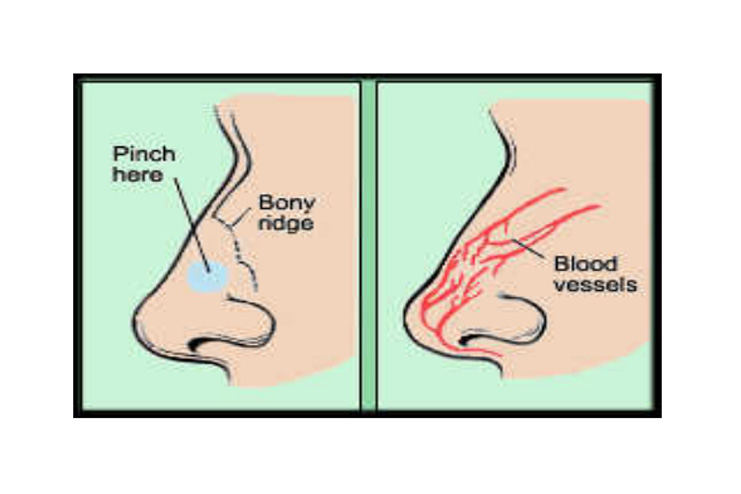
It is the bleeding from the tissues inside the nose which is more commonly caused by the broken blood vessel. Epistaxis is the common medical name for the nosebleed. The nosebleeds occur near the nostrils that are much closer to the front part. This part of the nose has many tiny blood vessels that can be damaged easily. Though it is scary it may not be a serious problem.
Nosebleeds are common in the children who live in the dry climate especially between 3 and 10 years. They can be scary but nothing to worry about them. As per the studies approximately 60 percent of the people experience the nosebleeds at some point in their life. of the total only 10 percent of the nosebleeds lead to the medical condition.
Types of nosebleed:
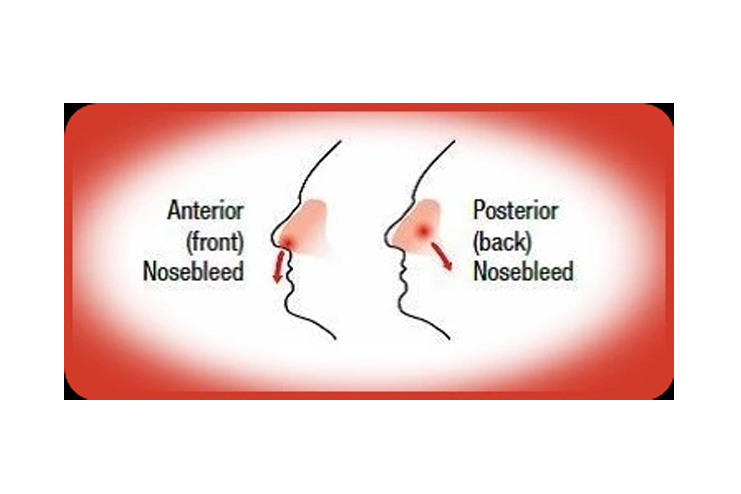
There are two most common types of nosebleeds:
1) Anterior nosebleed:
It is the more general type of the nosebleed and it comes from the front part of the nose. Capillaries or very small blood vessels inside the nose may break out and bleed leading to this type of the nose bleed.
2) Posterior nosebleed:
This type of the nosebleed comes from the deepest part of the nose. Blood flows down the back of the throat when the child is either in the sitting or standing position. Posterior nosebleeds are very rare. This type is more common in the older adults with the high blood pressure or for the ones with the nose of face injuries.
What are the symptoms of the nosebleed in children?
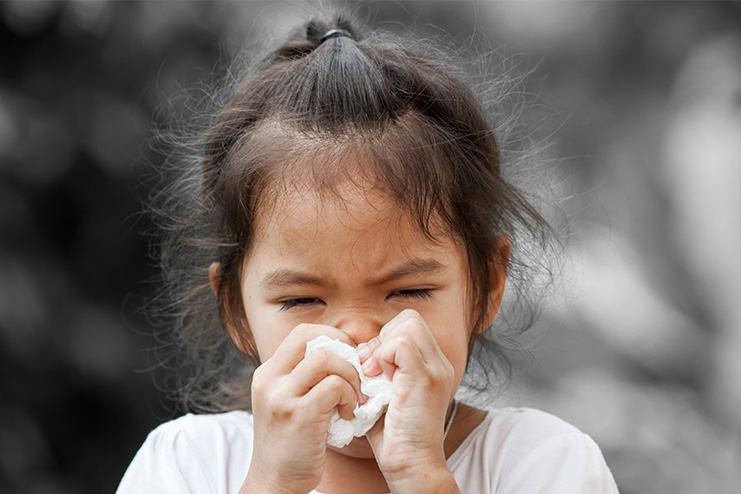
The major symptoms of the nosebleed are the blood dripping and running from the nose. The bleeding comes only from the one nostril if it comes from the mucus membrane in the front part of the nose. Bleeding comes from both the nostrils if it is from the higher up in the nasal cavity.
It is more essential to control it right away if you notice the following signs of the nose bleeding:
- You may notice the clotted blood around the nostril.
- The edge of the nostril may have the reddish spots
- You may notice the tiny spots of the blood when your toddler sneezes or you wipe his nose with a smooth cloth
- In the case of the posterior nosebleed, most of the blood flows down the throat from where it may get trickle down into the stomach and may trigger the vomiting with the tiny blood spots. Nose bleeding is not just the solo reason there are many other reasons for the blood vomiting in children
What Causes nosebleeds in toddlers?
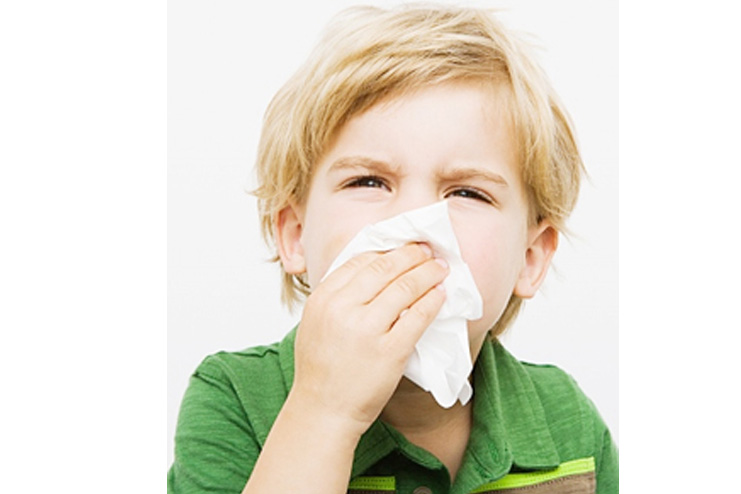
The reason for the any health condition will be helpful in the treatment process. The condition is true for the nosebleed as well. Here are a few reasons for the nosebleed in toddlers:
1. Allergies:
This is one of the most common reasons for nosebleed in toddlers. Certain allergies may lead to this condition when your doctor prescribe the medicines like antihistamines or the decongestants to control the itchy, runny, or the stuffy nose. Sometimes these medicines may dry out the nasal membrane leading to the nosebleed.
2. Forceful coughs:
Some diseases such as the cystic fibrosis can make your child to cough frequently with the excessive force. It increases the pressure of the blood vessels inside the nose that may lead to the rupture followed by the nosebleed.
3. Injury:
Most of the times, injury or the blow to the nose may cause the nosebleed. These type of the nosebleeds are not severe. But, if your child has any kind of the facial injury leading the bloody nose and it can not be controlled even after the 10 minutes, then it requires the immediate medical attention.
4. Sinus problem:
Several upper respiratory infections can lead to the nosebleed in children. Of those, cold and sinus infection are the most common. Sinusitis is a condition where the nasal cavities around the nasal passages become inflamed. This condition may dry out the nasal membrane and lead to the nasal bleeding.
5. Object in the nose:
Any foreign object inserted in the nose may cause the bleeding. When there is a foreign object inside the nose, there may be less bleeding and it is accompanied by the foul discharge. A unilateral nasal discharge is the sign of the foreign object in the body.
6. Dry air:
Dry air may lead to the anterior nose bleed. A dry climate or the heated indoor air may dry out the nasal membrane leading to the nose bleeding. The dry air may also cause the itchy crusts which bleed when scratched or picked.
7. Constipation:
Constipation may lead to the nose bleeding. Excessive straining while passing the stool or the toilet may lead to the nose bleeding.
8. Anatomical problems:
Any abnormal structure inside the nose may cause the nose bleeding. This may also include the abnormal growth of the tissues inside the nose.
9. Chronic illness:
Any child with the long term illness, or the child who requires extra oxygen or the medication are at the risk of drying out the lining of the nose. This may lead to the nosebleeds.
10. Suctioning of the nose:
Suctioning may sometimes cause the bleeding. Nose bleeding can happen especially if the suction tip is put in the nose too far.
11. Irritants:
Toxic elements and the irritants in the environment such as smoke from the vehicles, tobacco burning can irritate the nose of the child leading to the nosebleeding.
12. Bacterial infection:
Bacterial infections can lead to the sore, red, crusted areas just inside the nose and the front part of the nostrils. These infections may lead to the bleeding.
13. Aplastic anemia:
Under this condition, the bone marrow is unable to produce the required amounts of the red blood cells, white blood cells and the platelets. This can increase the risk of the nose bleeding due to the lack of availability of the platelets that can help to clot the blood.
How the nosebleed in the toddlers is diagnosed?
Doctors use the following methods to find out the underlying reasons for the nosebleed in toddlers.
1. Medical history of the toddler:
Before you approach the doctor you should be able to give the appropriate answers to the doctor regarding the previous medical history or any other injuries, the environmental conditions of the area that you live.
2. CT Scan:
Computed tomography or the magnetic resonance is recommended only if tumor or the other local diseases are suspected as the underlying cause for the nosebleed in toddlers.
This technique is composed of the several X-rays that give the image of the nose and the surrounding tissues. This technique will be helpful to diagnose the presence of nasal defects or the extent of the injury.
3. Physical examination:
Doctors use the nasal speculum for the deep examination of the inner portion of the nose. This can help them to suspect nasal ling for any defects or the presence of the foreign objects in the nose.
4. Blood test :
Blood test can help to detect the presence of the pathogens that could cause the common cold and flu. Allergies and the prevalence of any blood diseases can be diagnosed with the blood test.
How to stop nosebleeds in Toddlers:
A nosebleed usually comes all of the sudden and may flow freely from one nose. Most of the times nosebleeds can stop on their own within a few minutes.
Here are a few ways to stop nose bleeding in children:
1. Stay calm:
Nosebleed is not serious and you should not try to upset your child. If your rush yourself into fear then there is a possibility that your child may pick up some emotional cues. This is one of the best ways to prevent nosebleed in toddlers.
Nosebleed may seem to a child that they are losing a lot of blood. Keep reassuring your child that they will be Ok and you are there to control it.
2. Keep your child’s head in the correct position:
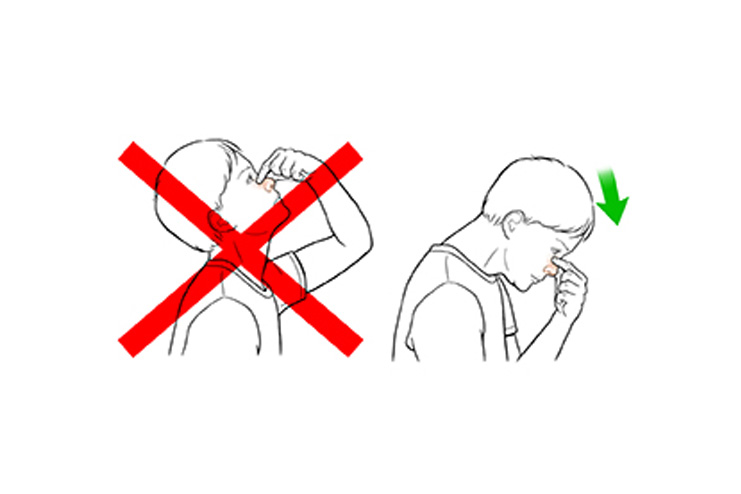
This is the primary nosebleed first aid for toddlers. Make child’s head upright and gently tilt it forward slightly. If you lean their head backwards, the blood may flow down the throat and it may taste bad. It can irritate your child and make them to cough and even vomit.
Ask your child to spit out any blood that is entering the mouth from the nose.
3. Cold compress:
We all know that cold compress can help to reduce the swelling and the inflammation and can help to stop the bleeding. The cold can restrict the blood flow and alleviate the pain. This is the recommended nosebleed treatment for toddlers.
Apply the cold pressure at the nose bridge for about 10 minutes. Don’t try to remove the compress to see if your child’s nose is bleeding during this time. This may restart the bleeding. If the bleeding did not stop continue pressing it for the next 10 minutes.
4. A gentle pitch:
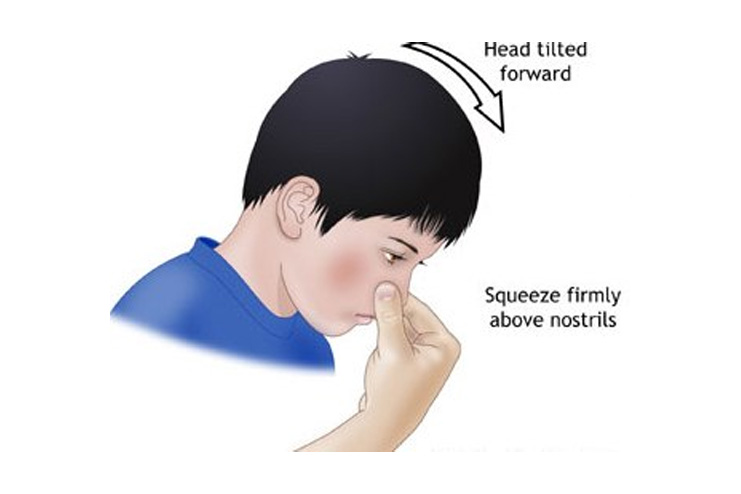
Gently pinch the softer portion of the nose just below the nasal bridge. Ask your child to breathe through their mouth while doing this.
Use the thumb and the index finger to restrict the bleeding from the nostrils. Continue this for about 10-15 minutes. Pinching can send the pressure to the bleeding point of the nasal septum and stops the flow of blood.
5. Get the enough relaxation:
Ensure that your child gets the enough relaxation after the nosebleed. Discourage the nose-blowing, picking, rubbing, or any other rough play.
6. No stuffing:
Don’t stuff cotton or any other cloth in the nose. This can stick to the blood clots and may reopen the wounds when removed.
7. Apple cider vinegar:
This is one of the best home remedies to control the nosebleed. Dip a cotton ball in the apple cider vinegar and place it in the affected nostril for about 10 minutes. This will help to stop the bleeding by narrowing the leaking vessel.
How to prevent the nosebleeds in children:
Most of the times, nosebleeds can be prevented by following few steps. Here you need to know about the prevention steps:
- Keep your child’s nose to prevent them from the injuries
- Keep the inside of your child’s nose moist with the saline water, nasal spray or gel. You can also apply some petroleum jelly or the antibiotic ointment around the opening of the nostrils.
- Use a humidifier which can spread the cool and he moist vapors in the room.
- Ensure to use the athletic equipment during the sports or the other activities to protect their nose from the injuries.
- Don’t smoke or avoid smoking in and around your child’s room.
- Ensure to include the enough amounts of vitamin C foods in your child’s diet which will strengthen their blood vessels making them less prone to the rupture causing top the nosebleed.
- Vitamin K rich foods including Kale, Spinach, mustard green, cabbage, and broccoli are involved in the formation of the collagen that will help in creating the moist lining inside the nose.
Medical treatment for the nosebleed in children:
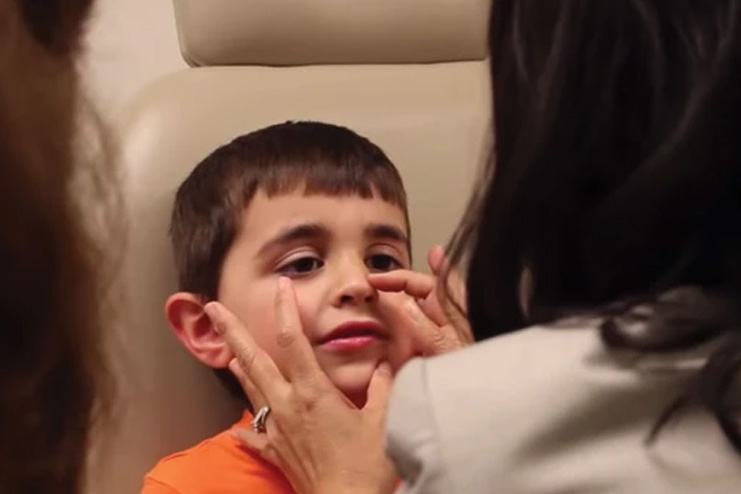
Children with the severe nose bleeding should see a doctor and he will follow the below methods to stop the bleeding.
- Applying the silver nitrate to the blood vessels to seal them
- Cauterizing or burning of the blood vessels to seal them
- Packing of the nose with the medicated gauze that can constrict the flow in the blood vessels
- Most severe cases of the nose bleeding may require the surgery to fix the blood vessels in the nose.
- If any kind of nasal infection is the root cause of the nasal bleed, then it can be treated with the use of antibiotics.
When a nosebleed requires immediate medical attention?
For the following conditions, a nosebleed requires immediate medical attention:
- If the bleeding continues 20 minutes after applying the cold compress
- Also If the bleeding is a result of the head injury, fall, or a blow to the face
- And If there is an intense headache, fever, and other concerning symptoms associated with the nosebleed
- If the child’s nose appears broken
- If you notice the signs of severe bleeding loss in the children including pale look, having little energy, feeling dizzy or a pass out
- Also If the child starts to cough out or vomit the blood
- Also If your child shows the symptoms of the bleeding disorder or taking the blood thinners
- If your child has the breathing difficulty
When to see a doctor for nosebleed in toddlers?
Children with the nosebleeds do not require the medical attention in most of the cases. most of the nosebleeds live for the short periods of time and can be treated at the home with proper care.
It is necessary to talk to the doctor under the following conditions:
- If the nosebleeds occur frequently
- Changes from the familiar to the new pattern
- If nosebleeding is accompanied by the severe congestion
- Demands frequent trip to the medical emergency room
Care to be taken for the toddler after the nosebleed:

The next task that you should do once the nosebleed comes into control is to provide your child sufficient care and protection that can help to avoid the nose from the stimulations.
1. No outdoor play:
Don’t allow your child to play outdoors. Outdoor environment is not suitable for the child soon after the nosebleed recovery as they are at the risk of exposing their nose to dust, toxic pollutants. Further it is not good to involve in the activities like running, jumping and other physical activities that may restart their nosebleed.
2. Avoid exposure to the hot items:
For the next 24 hours, don’t let your child to drink hot beverages and take the hot both. Heat may trigger the bleeding and may restrict the healing process.
3. Don’t touch the nose:
Ask your child don’t cause any disturbance to the nose by picking and blowing. Tell them to keep the object and the toys away from the nose. Assist your child in gently cleaning their nose.
Don’t let your child to place their head between the knees as it may further worse the bleeding. It is not recommended for your child to lie down during the nosebleed.
4. Lots of water:
Lack of the fluid intake may lead to the dryness of the mucus membrane causing the nose bleeding. Make sure that your child drinks enough amounts of water throughout the day.
In conclusion, knowing the discomforts and the ways to deal with it can help to handle them at the earliest before they turn severe. Nosebleed is not the serious condition proper awareness and the basic first aid techniques and proper care can help to stop the bleeding and prevent the re occurrence of the condition. The most important thing that you can teach your child is to keep their fingers and toys away from their nose.










































